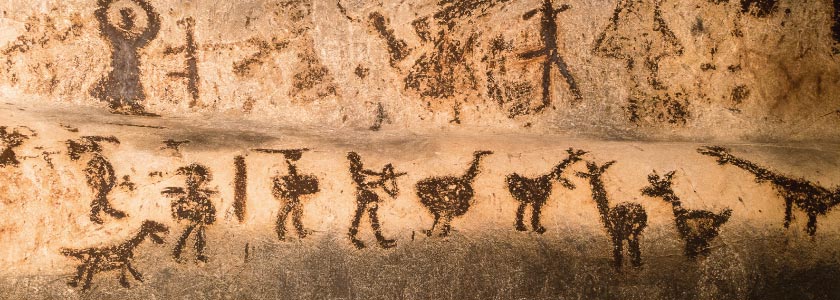Who roamed the steppes of Eurasia? Who were the early Greeks?

The takeaway: Advanced sequencing of ancient DNA is uncovering centuries-old insight into early cultures scattered across the steppes of Asia and around the Aegean Sea.
Results from ancient genome research is aiding our understanding of how ancient cultures settled the steppes of Asia.
The two studies revealed new findings about the Scythians, Eurasian nomads who lived across the Eurasian steppes in the area of present-day Kazakhstan, and Bronze Age cultures scattered along the Aegean Sea, an arm of the Mediterranean which separates modern-day Greece and Turkey.
Nomadic Scythians: Genetically heterogenous but spread across a vast territory
In the report on Scythians, researchers from Kazakhstan generated genome-wide targeted sequencing data from samples found in archaeological sites in central Asia and genotyping data for present-day Kazakhs. In a study published in Science Advances, researchers found that the Scythians were genetically heterogenous and shaped from a variety of admixture events. Haplogroup H8c, identified in the Scythians likely belongs to East Eurasian lineages as well.
The Scythians dominated the steppes from about the 7th century BC until about the 3rd century. While without a written language, they spoke an Iranian language and practiced a type of ancient Iranian religion. Scythian warriors mastered mounted warfare and created a nomadic empire stretching from the Carpathian Mountains in the west to the Ordos Plateau in the east. Before their displacement by the Celts and Sarmatians, they left behind kurgan tombs, impressive structures, golden carvings, and golden jewelry.
Part of the findings also point to the modern-day meaning of the term “Scythians” to collectively define different populations across a vast territory that once had a common origin as well as similar economic structure and culture.
Contemporary Kazakh populations, which were estimated to have been established between AD 1341 and 1544, were more homogenous than the Iron Age and later populations. This is likely due to Zheti-ata, or Jetyata, a custom followed closely for four centuries which encouraged family history knowledge and discouraged marriages within seven generations.
Similarities between the major ancient Aegean civilizations
An international team of investigators has used ancient genome sequencing to retrace the population ancestry of Bronze Age populations living around the Aegean Sea. The results were published in the journal Cell.
Using targeted-enrichment whole genome sequencing and other methods, including machine learning, the researchers retrieved Early Bronze Age samples from Helladic, Cycladic, and Minoan cultures and paired the sequences with new mitochondrial genome sequences from Aegean people and newly sequenced material from a Helladic culture in northern Greece.
The study found that, despite documented cultural differences such as art, architecture, and burial traditions, all three Aegean cultures shared ancestry with Neolithic farming populations and individuals in the Cycladic islands, those on Crete, and those in mainland Greece. The Cyclades are a group of islands southeast of mainland Greece and centered around the uninhabited island of Delos, considered to be the birthplace of Apollo and today home to some of Greece’s most important archeological ruins.
“The Early Bronze Age genomes are homogeneous and derive most of their ancestry from Neolithic Aegeans, contrary to earlier hypotheses that the Neolithic-Early Bronze Age cultural transition was due to massive population turnover,” the authors wrote. “Early Bronze Age Aegeans were shaped by relatively small-scale migration from East of the Aegean, as evidenced by the Caucasus-related ancestry also detected in Anatolians.”
It is not yet known, however, how representative the analyzed genome samples are, the authors cautioned, noting that the study of genomes from Armenians and those in the Caucuses from the Mesolithic and Bronze Ages could further pinpoint the origins and mode of gene flow into the area.
These findings pair with other recent studies that used sequencing methods to uncover clues about ancient cultures, including the settlement of China and the path that early humans took on their migration out of Africa.
Are you engaged in NGS research? IDT has a host of tools and products available, including tools for extraction, library prep, target enrichment, and sequencing.
